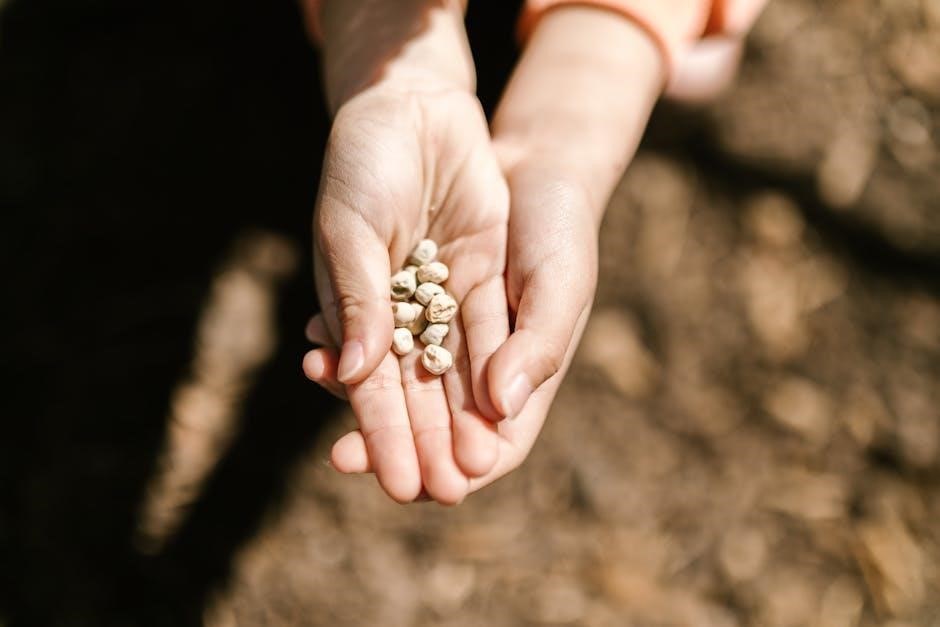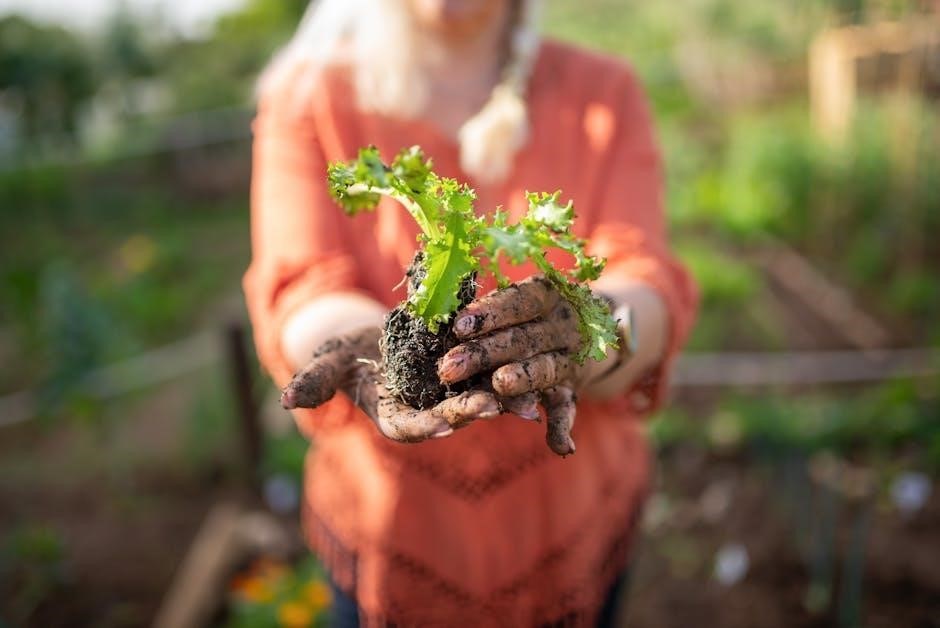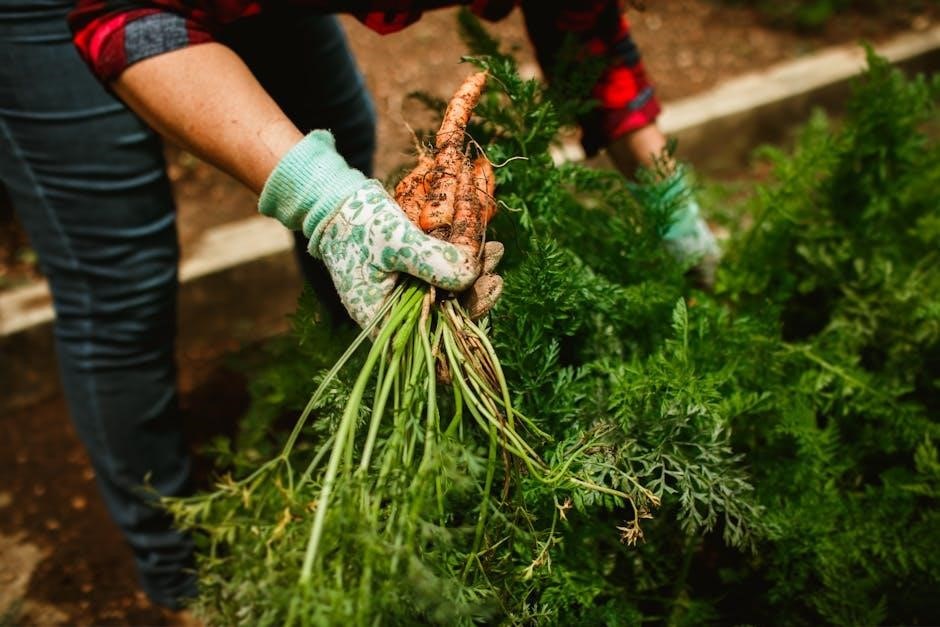
vegetable planting guide zone 9
Zone 9 offers gardeners a unique opportunity: year-round planting! With a long growing season, you can harvest something almost constantly. Maximize your garden’s potential by aligning your practices with the specific climate. Use frost dates and knowledge to create an effective gardening calendar.
Understanding Zone 9 Climate
Zone 9 presents a gardener’s paradise with its extended growing season, typically stretching from February to November. This allows for nearly year-round planting, offering a diverse range of vegetable options throughout the year. Understanding the nuances of Zone 9’s climate is crucial for successful gardening. The zone is characterized by its mild winters and warm summers.
The average minimum temperature in Zone 9 is around 25°F, which means that hard frosts are rare, but can still occur. This influences the types of vegetables that can thrive, favoring those that can tolerate cooler temperatures during brief winter dips and flourish in warmer conditions;
Knowing the typical weather patterns, including rainfall and sunlight hours, is vital for planning your garden layout and choosing appropriate varieties. Consider factors like humidity and potential for heatwaves when selecting vegetables. By understanding these key aspects of Zone 9’s climate, you can optimize your planting schedule.
Frost Dates in Zone 9
Understanding frost dates is paramount for successful vegetable gardening in Zone 9. While Zone 9 enjoys a long growing season, it’s not entirely frost-free. The last frost date typically falls around March 1st, but can be as early as January 30th. The first frost date usually occurs around December 15th, with possibilities extending as late as December 30th.
These dates are averages, and actual frost occurrences can vary by a week or two, influenced by microclimates and yearly weather variations. Monitoring local weather forecasts is crucial for accurate planting decisions. Use these dates to calculate planting schedules and ensure vegetables mature before potential frost;
Protecting sensitive plants during unexpected frost events can extend the growing season. Consider using row covers or other protective measures. By carefully tracking frost dates and using appropriate safeguards, you can maximize your vegetable yields in Zone 9. Remember to adapt your planting based on yearly weather patterns.
Extending the Growing Season
Zone 9’s already generous growing season can be further extended with strategic techniques. Start seeds indoors 6-8 weeks before the last expected frost to gain a head start. Utilize cold frames or hoop houses to protect plants from late frosts in spring and early frosts in fall, creating a microclimate that shelters them.
Row covers provide additional warmth and protection against frost and pests. Succession planting, sowing seeds every few weeks, ensures a continuous harvest throughout the year. Choose early-maturing varieties to maximize yields before the first frost.
Consider using thermal mass, like dark-colored containers or walls, to absorb and radiate heat, moderating temperature fluctuations. Select south-facing locations for gardens to maximize sunlight exposure. Overwintering certain vegetables, such as kale and collards, provides harvests throughout the colder months. With careful planning and implementation, you can enjoy fresh vegetables year-round in Zone 9.
Best Vegetables to Plant in Zone 9

Zone 9’s mild climate allows for a diverse range of vegetables to thrive. For warm-season crops, tomatoes, peppers, eggplants, and cucumbers flourish in the long, sunny days. Beans, corn, and squash are also excellent choices for summer harvests.
Cool-season vegetables like lettuce, spinach, kale, and arugula can be planted in fall and winter, providing fresh greens when other gardens are dormant. Root vegetables such as carrots, beets, and radishes also thrive in cooler temperatures.
Consider planting garlic and onions in the fall for a spring harvest. Broccoli, cauliflower, and cabbage are well-suited for Zone 9’s mild winters. Experiment with Asian greens like bok choy and mustard greens for a unique flavor.
Ultimately, the best vegetables to plant depend on your personal preferences and the specific microclimate of your garden. Remember to consult a planting guide to determine the optimal planting times for each vegetable in your region. With careful planning, you can enjoy a bountiful harvest year-round in Zone 9.
Cool-Season Vegetables for Zone 9
Zone 9’s mild winters are perfect for growing a variety of cool-season vegetables. Leafy greens like lettuce, spinach, kale, and collard greens thrive in cooler temperatures, providing fresh salads and side dishes throughout the fall and winter months. Arugula and other Asian greens, such as bok choy and mustard greens, also flourish during this time.
Root vegetables like carrots, beets, radishes, and turnips are excellent choices for fall planting. These vegetables benefit from the cooler soil temperatures and develop sweet, flavorful roots. Peas and broad beans can also be planted in the fall for a spring harvest.
Cole crops, including broccoli, cauliflower, cabbage, and Brussels sprouts, are well-suited for Zone 9’s mild winters. These vegetables require a period of cool weather to develop properly, making fall planting ideal. Garlic and onions can also be planted in the fall for a spring harvest, adding flavor to your dishes. With careful planning, you can enjoy a continuous supply of fresh, cool-season vegetables throughout the year in Zone 9.
Warm-Season Vegetables for Zone 9
Zone 9’s long, warm growing season allows for a bountiful harvest of heat-loving vegetables. Tomatoes, peppers, and eggplants thrive in the warm soil and abundant sunshine, providing a colorful array of options for summer meals. Plant various tomato varieties, from juicy slicers to sweet cherry tomatoes, for a diverse harvest.
Cucumbers and squash are also excellent choices for Zone 9 gardens. These vegetables grow quickly and produce abundant yields throughout the summer. Beans, both bush and pole varieties, are another great option, providing a steady supply of fresh beans for salads and side dishes.
Corn, okra, and sweet potatoes are also well-suited for Zone 9’s warm climate. These vegetables require plenty of sunshine and warm soil to thrive. Melons, such as watermelons and cantaloupes, can also be grown successfully in Zone 9, adding a sweet and refreshing treat to your summer harvest. With careful planning, you can enjoy a continuous supply of fresh, warm-season vegetables throughout the long growing season in Zone 9.
Monthly Planting Guide for Zone 9
Creating a monthly planting guide is essential for maximizing your Zone 9 garden’s potential. Each month offers unique opportunities to sow seeds and transplant seedlings, ensuring a continuous harvest throughout the year.
In early spring, typically February and March, focus on planting cool-season crops like lettuce, spinach, and kale. As the weather warms up in April and May, transition to warm-season vegetables such as tomatoes, peppers, and eggplants.
Summer months, June through August, are ideal for planting heat-loving crops like okra, corn, and sweet potatoes. In the fall, September and October, you can start a second round of cool-season vegetables for a winter harvest.
Even in the winter months, November through January, Zone 9 offers opportunities for planting certain vegetables, such as carrots, beets, and Brussels sprouts. By following a monthly planting guide tailored to Zone 9’s climate, you can enjoy a diverse and abundant harvest year-round. Remember to adjust planting times based on your specific microclimate and weather conditions.
January-February Planting
January and February in Zone 9 present a unique opportunity to get a head start on the gardening season. While much of the country is still experiencing winter’s chill, Zone 9’s mild climate allows for the planting of several cool-season crops.
During this period, focus on vegetables that can tolerate cooler temperatures and shorter days. Leafy greens like lettuce, spinach, and arugula thrive when planted in January and February. Root vegetables such as carrots, beets, and radishes can also be directly sown into the garden.
Consider planting brassicas like kale, collard greens, and broccoli for a late spring harvest. Onions and garlic can also be planted during this time.
Protect your young plants from potential frost by using row covers or cold frames. Monitor the weather closely and be prepared to take additional measures if temperatures drop unexpectedly. With careful planning and attention, you can enjoy fresh, homegrown vegetables even in the heart of winter. Remember to amend the soil with compost to provide essential nutrients.
March-May Planting
March to May marks the transition to warmer weather in Zone 9, opening up a wider variety of planting possibilities. As the risk of frost diminishes, it’s time to introduce warm-season crops to your garden.
Start by planting tomatoes, peppers, and eggplants, either as transplants or from seeds started indoors. Cucumbers, zucchini, and other squash varieties can also be sown directly into the ground.
Beans and corn are excellent choices for planting during this period, benefiting from the increasing sunlight and warmer soil temperatures. Melons, such as watermelon and cantaloupe, can be started indoors and transplanted once the soil has warmed sufficiently.
Continue succession planting cool-season crops like lettuce and radishes to ensure a continuous harvest. Remember to water regularly, especially as temperatures rise, and provide support for vining plants like tomatoes and cucumbers. Monitor for pests and diseases, and take appropriate action to protect your crops. With careful attention, your garden will flourish during these productive months.

Fall and Winter Gardening in Zone 9
Fall and winter in Zone 9 present a unique opportunity to extend the growing season and enjoy fresh vegetables throughout the cooler months. As temperatures begin to drop, it’s time to focus on planting cool-season crops that thrive in milder conditions.
Leafy greens like lettuce, spinach, kale, and collards flourish during this period, providing a continuous supply of fresh greens for salads and cooking. Root vegetables such as carrots, beets, radishes, and turnips can be sown directly into the ground, offering a colorful and nutritious harvest.
Broccoli, cauliflower, cabbage, and Brussels sprouts are excellent choices for fall planting, benefiting from the cooler temperatures and reduced pest pressure. Peas and fava beans can also be planted, providing a source of nitrogen for the soil.
Protect tender plants from occasional frosts with row covers or blankets. Ensure adequate drainage to prevent waterlogged soil during winter rains. With proper planning and care, your Zone 9 garden can remain productive and vibrant throughout fall and winter.

Soil Preparation and Amendments for Zone 9 Gardens
Successful gardening in Zone 9 hinges on proper soil preparation. Begin with a soil test to determine pH levels and nutrient deficiencies. Most vegetables thrive in slightly acidic to neutral soil (pH 6.0-7.0). Amend alkaline soils with sulfur or acidic organic matter like pine needles.
Improve drainage in clay soils by incorporating compost, well-rotted manure, or other organic materials. Sandy soils benefit from amendments that increase water retention, such as compost or peat moss.
Add a balanced organic fertilizer to provide essential nutrients for plant growth. Incorporate cover crops like legumes to improve soil fertility and structure. Regularly replenish organic matter to maintain healthy soil.

Consider raised beds for improved drainage and easier access. Mulch around plants to conserve moisture, suppress weeds, and regulate soil temperature.
Healthy soil is the foundation of a thriving Zone 9 garden, ensuring bountiful harvests throughout the year. By focusing on soil preparation, you will set the stage for success.